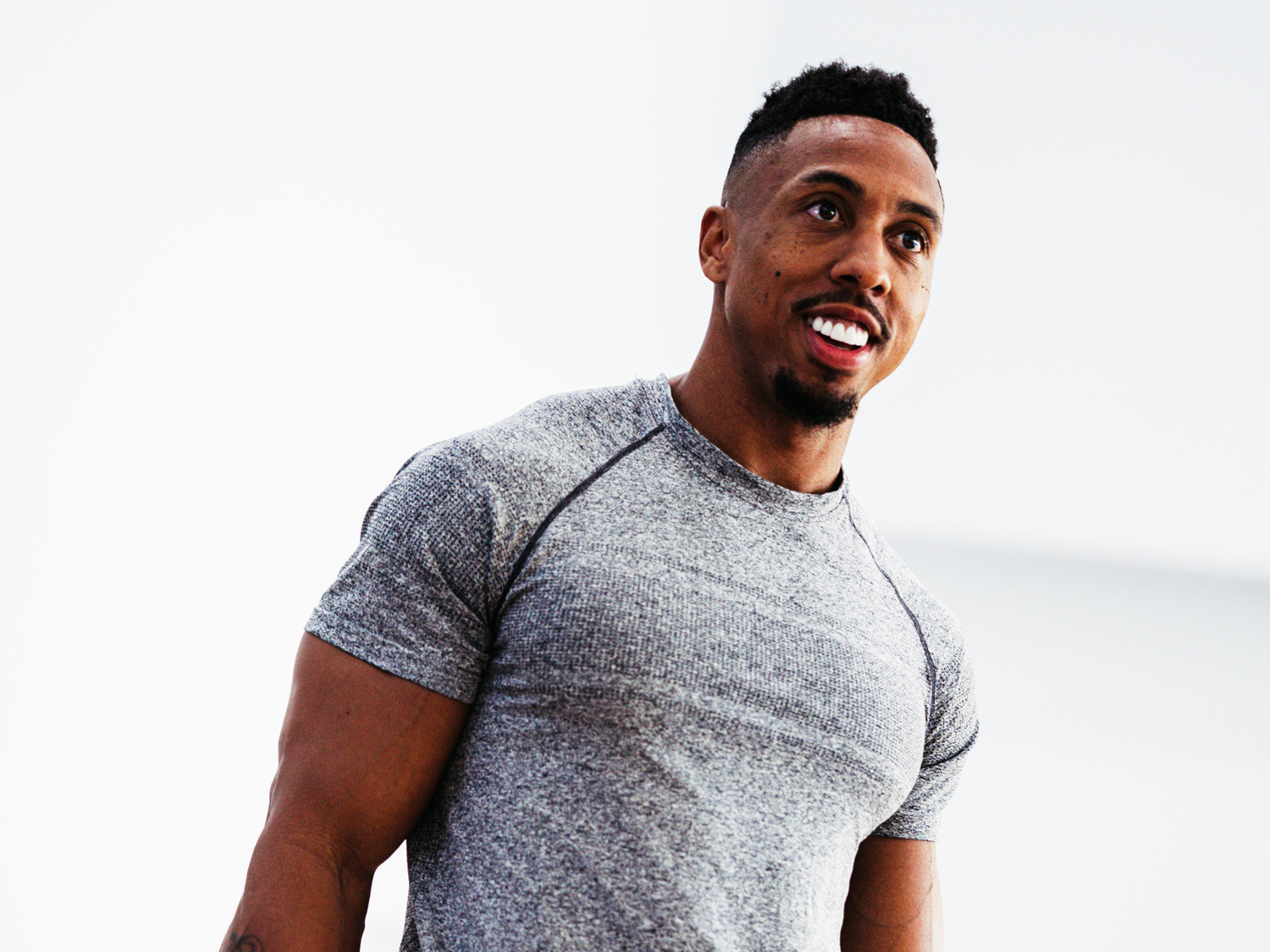- Mubarak “Bar” Malik is the athletic performance advisor for the New York Knicks and an advisor for Ladder, a new supplement brand designed in partnership with LeBron James.
- I attended a workout Malik led in New York City to help promote Ladder.
- I’ll definitely be adding these (mostly) equipment-free moves to my own workouts to help build muscle, boost agility, and speed recovery – even though I don’t play basketball.
- Visit INSIDER’s homepage for more.
When I was invited to join the workout, I wasn’t worried about keeping up since my typical exercise routine involves a lot of high-energy moves to train for the full-contact sport of roller derby.

Most of my workouts involve an hour of aerobic exercises like box jumps, burpees, sprinting, and high knees followed by two hours of running into people at high speeds on roller skates.
Still, I wasn’t sure what to expect from someone who works with pro basketball players. I don’t even know that much about basketball.

Getting there by the 8 a.m. start time was already a victory in my book.
Read more: NBA star Draymond Green lost 25 pounds in 6 weeks by eating more protein and cutting out alcohol
We started with foam rolling our calves, hamstrings, quads, and glutes to help warm up the muscles for some hard work.

Foam rolling loosens up the soft tissue surrounding the muscles, which can relieve pain, prevent injury, and help you recover more quickly after an intense workout.
Next, we used a resistance band to make simple moves like squats and stepping from side to side more effective.

Placing a resistance band above your knees creates tension to help build power. Try it with squats and footwork drills like stepping side to side, forward and backward, and "fast feet," or squatting low and stepping rapidly in place.
Dropping into a low lunge, while twisting one arm upwards, works the core and legs. It also builds muscle.

A lunge with a twist can help boost flexibility, leg strength, and core strength.
To do one, drop into a lunge, then put one hand on the inside of the foot that's forward. Turn toward your forward knee and lift the other hand to the sky.
Then we did reverse lunges, but with a twist. On the way up, we lifted our knees up and forward to work on balance, small stabilizing muscles, and our glutes.

Step one foot back behind you, bringing your knee almost to the ground in a reverse lunge. Then, as you step back up, bring that knee up in front of you with forward momentum while keeping your balance.
A walking plank — moving from your forearms to your hands and back, keeping your hips stable — is a great exercise for your core and shoulders.

Start in a plank on your hands, and lower your elbows to the ground, placing them where your hands were. Then replace your elbows with your hands and raise yourself back up. Try not to move your hips to get the most out of your core.
We did two other variations of plank — a regular, stationary plank and an inchworm. Both are good ways to keep exercising while you lower your heart rate after faster movements like mountain climbers.

To do an inchworm, start in a standing position, bend down and touch your toes, then walk your hands out to a plank position. Hold for a moment (or do an optional pushup), then walk your hands back to your feet and stand up.
Read more: 11 of the top protein powder brands, and how much sugar and protein they actually contain
Our final circuit was an intensive ab circuit — 20 seconds of work and 10 seconds of rest, repeated six times. We started with leg raises.

Lay on your back with your legs straight - keeping your legs and feet together, raise your legs off the ground as high as you can, then slowly lower back down.
But at the top, we added a toe touch, lifting our shoulders off the mat and our hands toward our feet.

For some extra burn in the abs, pause at the top of your leg raise and lift your shoulders off the mat, bringing your hands toward your feet and contracting your lower abs. Keep your lower back flat on the floor through the movement.
We ended with more muscle massage, this time using a vibrating massage ball, and of course, a protein shake from Ladder. Having a meal or shake after your workout is the best way to build muscle and fuel recovery.

After the workout, I talked to Ladder's chief of nutrition Adam Bornstein about the best things to eat and drink after a workout. The bottom line: Make sure you have a healthy snack or meal soon after to build muscle and fuel recovery. And drink plenty of water.
Read more:
A celebrity trainer reveals the 6 biggest fitness myths on Instagram

